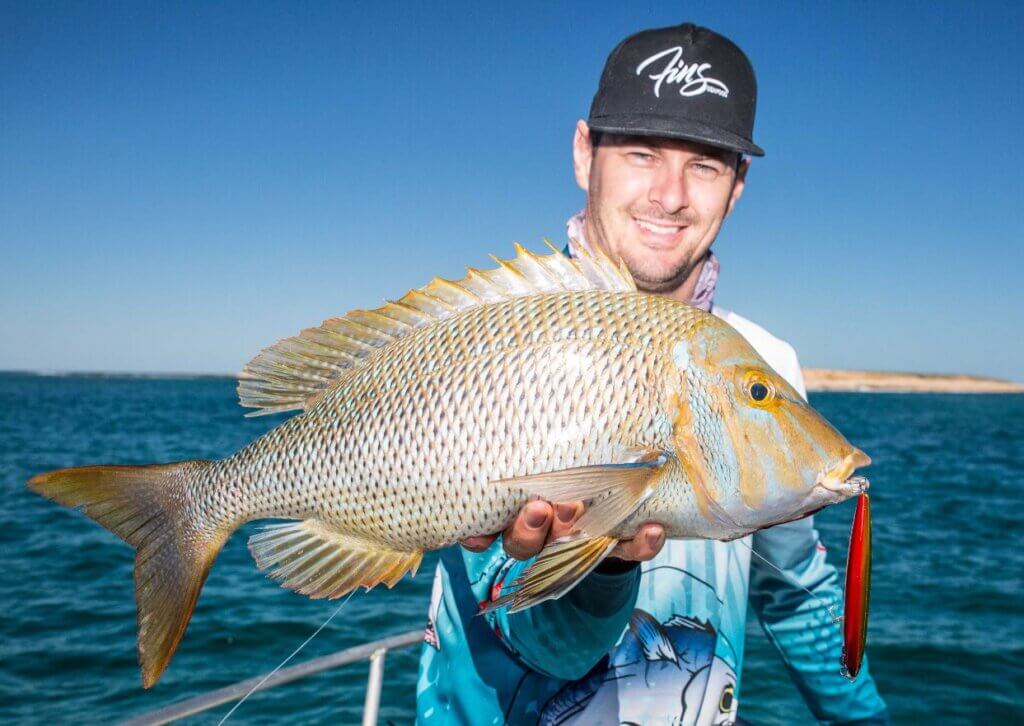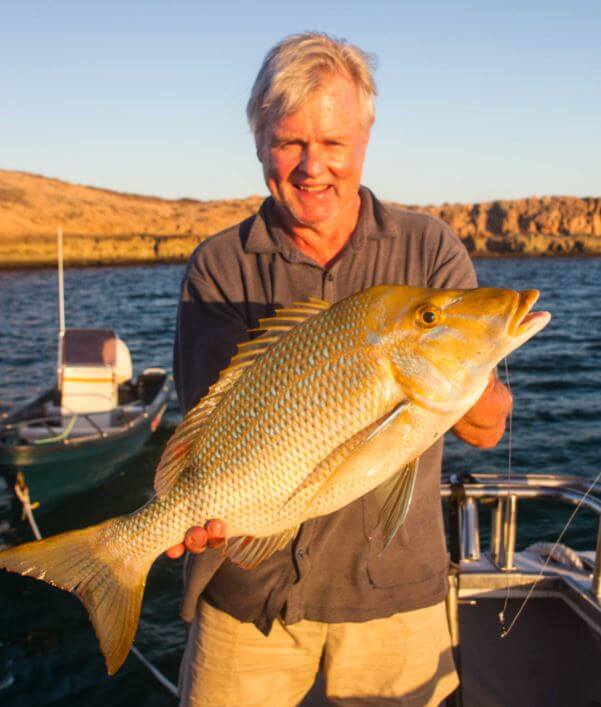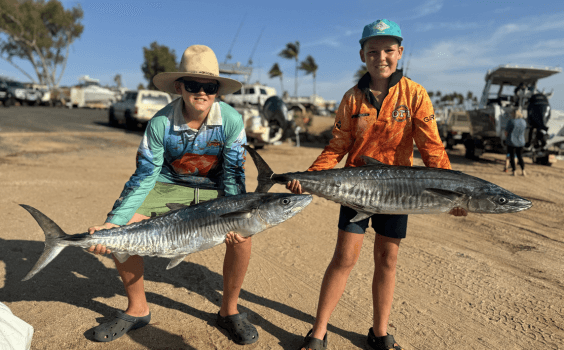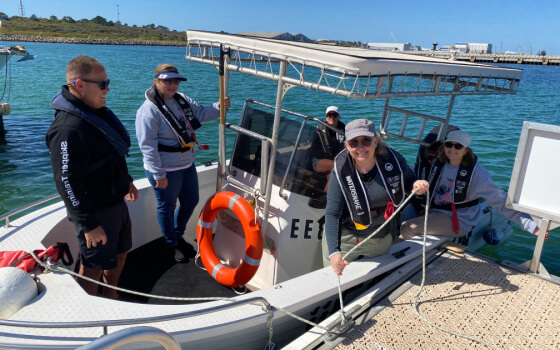For Scott Coghlan, spangled emperor are one of the most underrated recreational fishing species in Australia. Spanglies put up an awesome fight, have striking colours and taste great too! Read what else Scott has to say in this week’s edition of Scott’s Species.
Species: Spangled emperor, Lethrinus nebulosus
Eating: 4 stars
ID: Blue spots on scales and blue lines on cheek.
Given how accessible they are, I reckon one of the most underrated fish in Australian waters is the spangled emperor, which are often called the north-west snapper.

There are many members of the emperor family that look very similar, but the spanglie has blue stripes on the cheek and blue spots on its flanks.
Spanglies are a tough and hardy fish that can survive in a variety of environments, from reefy shallows to depths of 75m or more, meaning they are encountered by both land and offshore anglers.
Spanglies are found from Rottnest Island (occasionally) northwards around the top of the country to far north New South Wales.
In WA, most would regard the main region for spanglies to be Shark Bay to Exmouth and it is this area that most of the bigger fish are caught.
Spanglies are an awesome opponent in shallow water, as they hit hard and fight strongly, happily taking lures and baits.
Some of my fondest fishing memories are chasing big spanglies in 2m to 3m of water at the Montebello Islands from a kayak, using smallish stickbaits worked close to the surface.
There would be an explosive surface hit and then a ferocious battle to stop them finding their way back to the bottom structure.
Quite big spanglies will be found in surprisingly shallow water and Ningaloo is a great place for shore fishing for them, as they will happily hit a range of lures in shallow water including poppers, as well as a range of baits.
A lot of spanglies are also caught by boat anglers burleying up around bommies inside the Ningaloo Reef.

I’ve caught some seriously big spanglies at night fishing baits at places like Steep Point and Quobba, as they can be very active after dark.
Growing to 12kg and almost 1m, spanglies are tough fighters and taste great on the plate, most often caught at around 2kg to 3kg.
Spanglies are suckers for fresh bait, such as chunks of freshly caught fish, or pilchards, octopus and squid.
Using a float to hold the bait just off the rugged bottom when fishing shallow water from shore can be very effective.
As mentioned, they head for cover when hooked and are often identifiable on the end of the line by their bullocking first run.
Simple rigs will suffice when fishing for them in deeper water and the gear used should be tailored to the approach being used, which may mean anything from a long beach rod from shore to a medium spinning outfit for casting the shallows, or a strong boat rod for offshore spanglie action.
A fairly substantial leader to the bait or lure is recommended to offer some protection when they head for cover.






